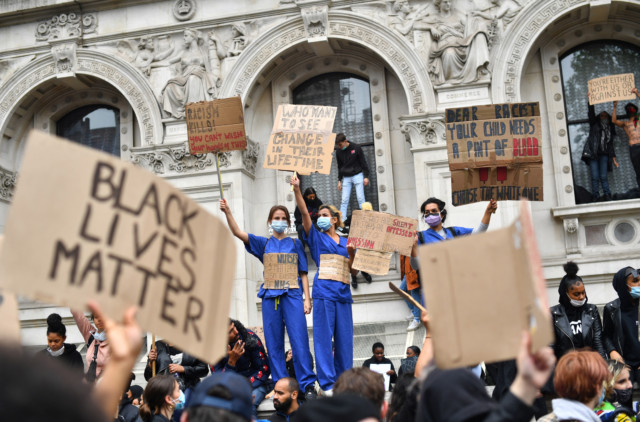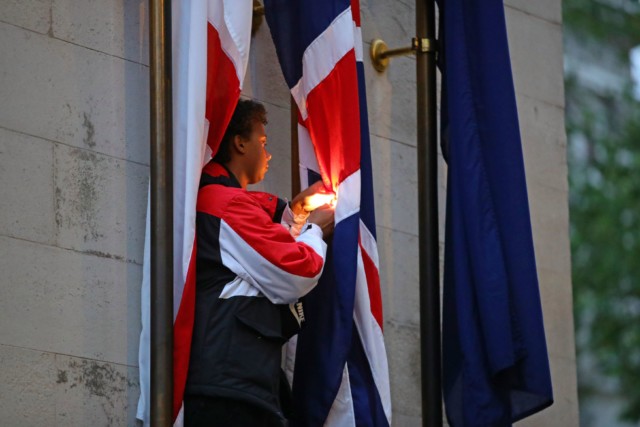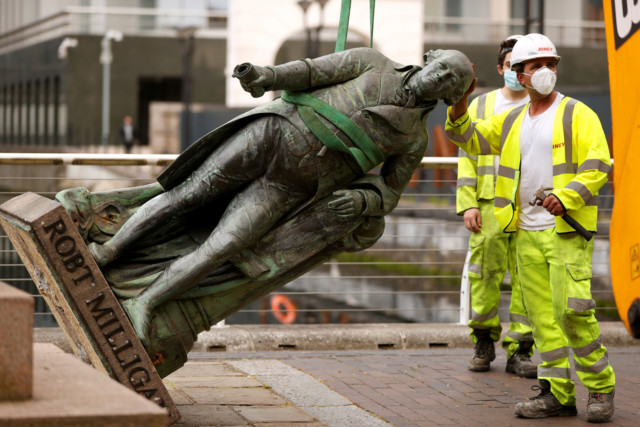PROTESTERS have drawn up a map of “racist” statues across Britain they want torn down.
A group called Topple the Racists want statues across Britain pulled down and street names changed after the memorial to slaver Edward Colston was tossed into the harbour in Bristol by Black Lives Matter protesters at the weekend.
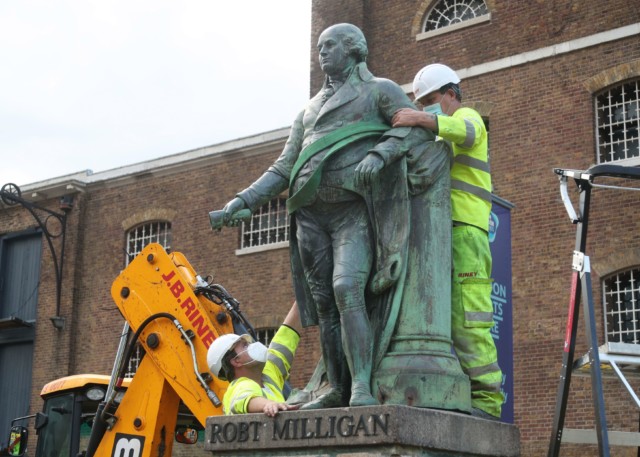
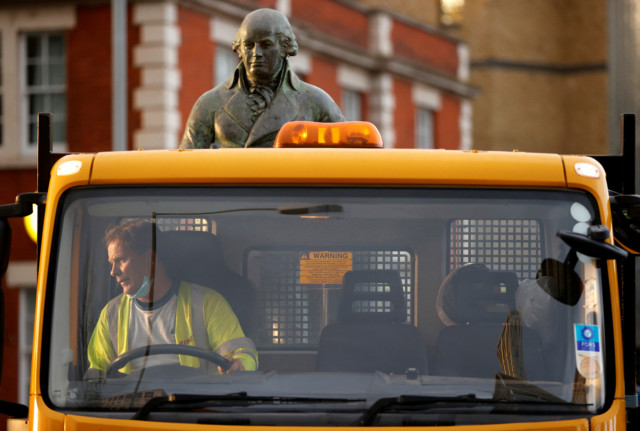
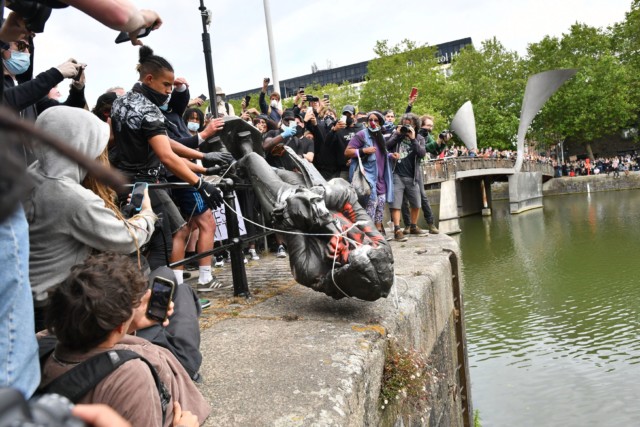
The tearing down of Colston’s statue sparked a furious debate over which people get honoured with memorials in Britain, and a statue in London of 18th century slave trader Robert Milligan was taken down yesterday.
The website was published by the Stop Trump coalition in support of the Black Lives Matter protests and maps out 60 statues across Britain which pay tribute to slave traders and “racists”.
The group said: “We believe these statues and other memorials to slave-owners and colonialists need to be removed so that Britain can finally face the truth about its past – and how it shapes our present.
They said they were inspired to start the map by the actions of the protesters in Bristol.
“Statues are exercises of public adoration. And Edward Colston made his fortune in the slave trade.
“He was part of a system of mass murder, torture and human suffering.
“We must learn from, not venerate, this terrible chapter in British colonial history.”
The list of statues and street names range from statues of Christopher Columbus in Belgravia, London, the famed explorer who colonised America to stained glass windows in Cambridge and street names in Croydon.
The news comes after London Mayor Sadiq Khan demanded statues and plaques be removed and street names in London changed if they commemorate slave owners.
Mr Khan told Sky News yesterday: “We’ve got to realise that our public realm statues, squares, street names don’t accurately reflect our values, or London, in 2020.”
But he added: “I don’t condone at all any attacks on our police, any disorder or criminal damages.”
Meanwhile, it has been announced 130 Labour councils across England and Wales will begin reviewing monuments and statues in their towns and cities.
It means dozens more monuments could be removed.
A statement posted on Twitter said: “LGA Labour have consulted with all Labour council leaders, and there is overwhelming agreement from all Labour councils that they will listen to and work with their local communities to review the appropriateness of local monuments and statues on public land and council property.”
‘APPROPRIATE MONUMENTS’
And in Scotland, Adam McVey, leader of Edinburgh city council, told BBC Radio Scotland he would feel “absolutely no sense of loss” if the statue of Henry Dundas, 1st Viscount Melville responsible for delaying the abolition of the slave trade by 15 years, was removed from the 150ft Melville Monument.
Yesterday a statue of Robert Milligan – thought to have owned some 500 slaves – was removed from the West India Quay in east London following a petition from a Labour MP.
Milligan was the driving force behind the building of the West India Docks in London.
He also traded slaves in Jamaica.
Reports say the statue’s removal was met with cheers and applause from onlookers.
Milligan’s statue had stood outside the Museum of the Docklands near the West India Quay he helped create near Canary Wharf.
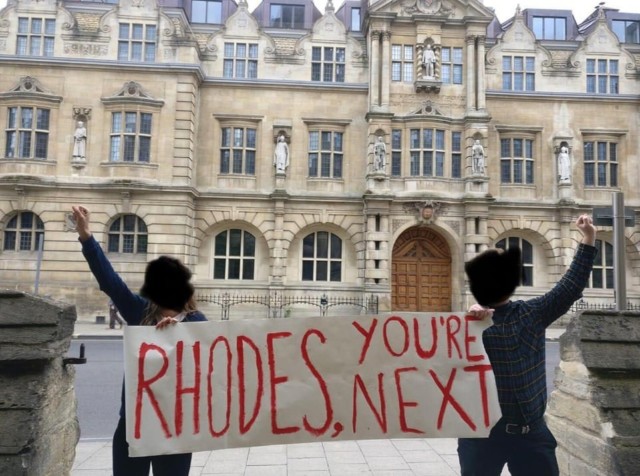
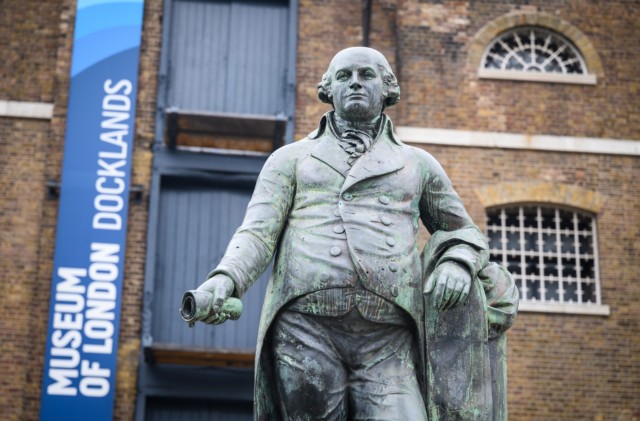
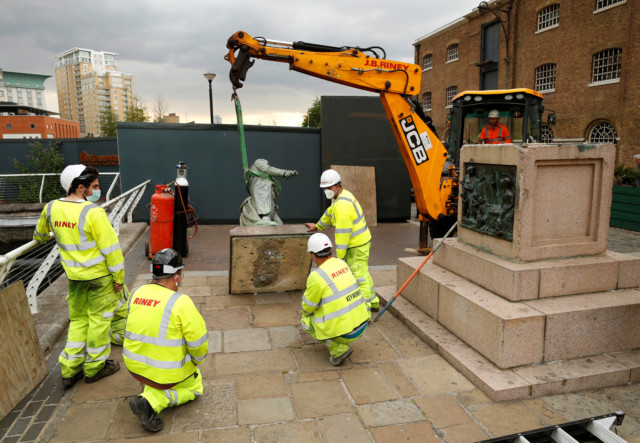
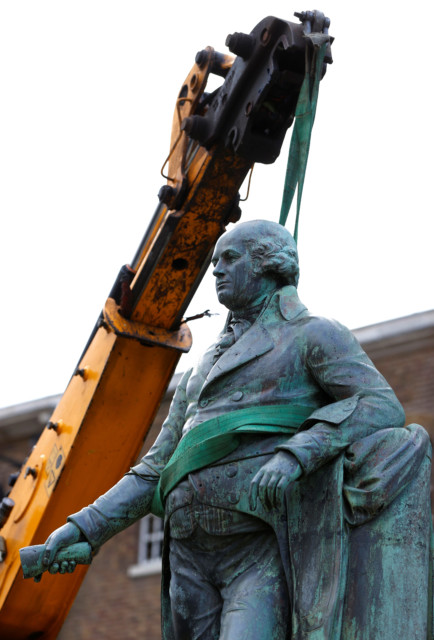
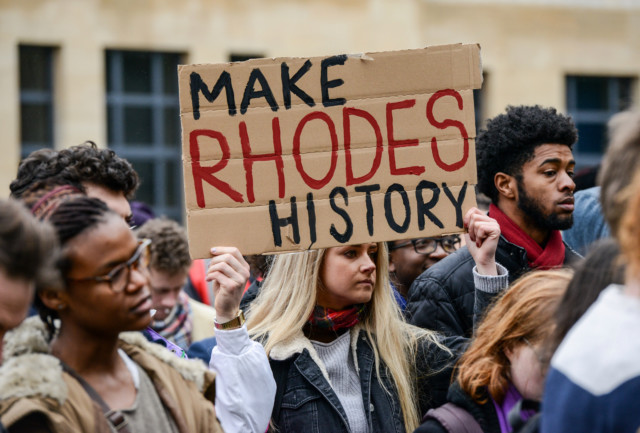
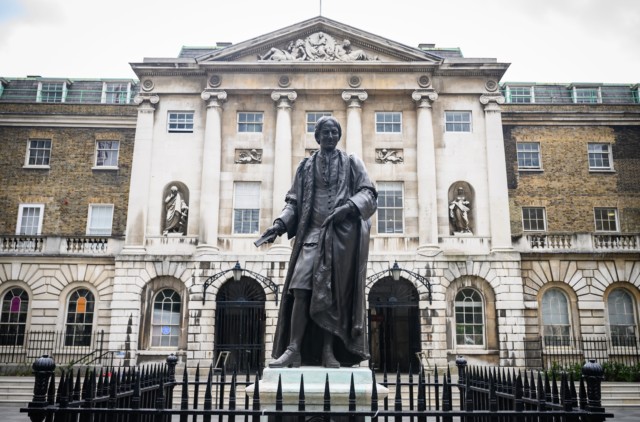
London Mayor Sadiq Khan added the Commission for Diversity in the Public Realm would work to introduce statues and memorials which “better reflect London” including the inclusion of more black, disabled and LGBTQ+ people.
Some of statues that could be part of a cull are slave traders and owners William Beckford, John Cass and Thomas Guy.
Former Lord Mayor of London William Beckford, who has a statue inside London’s Guildhall, is believed to have owned around 3,000 slaves in plantations in Jamaica.
Sir John Cass was a philanthropist and a slaver, who was a member of the Royal African Company’s Court of Assistance for three years in the 1700s.
The foundation set up in memory of him provides support to schools and universities in London – including the Cass Business school.
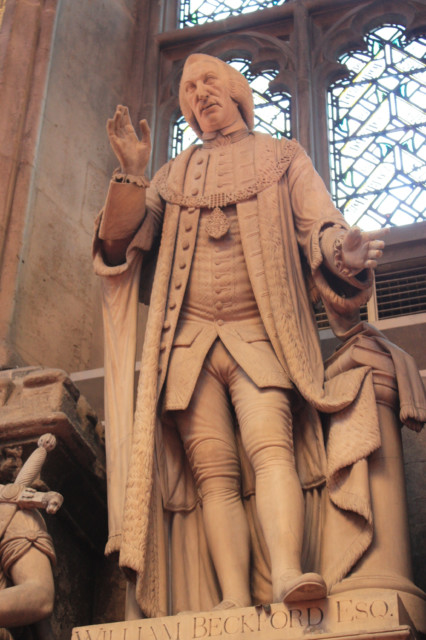
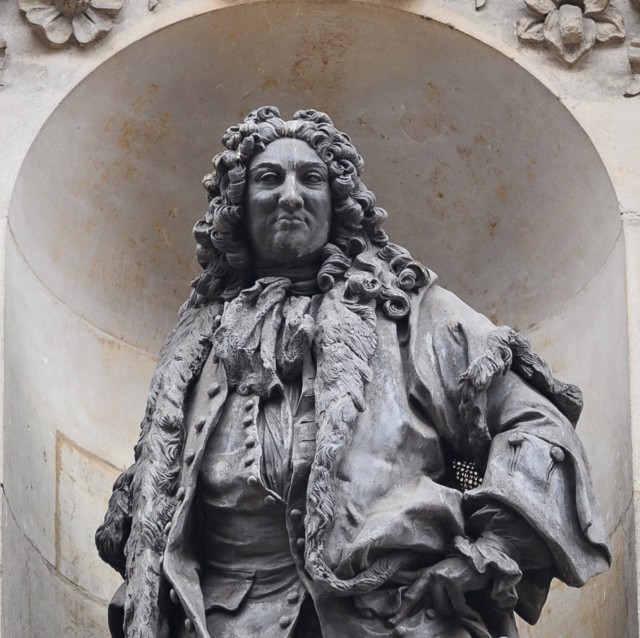
Thomas Guy, who one King’s College London’s campuses is named after, made his fortune off of investing in the slave trade.
Yesterday, people were spotted trying to fish the statue of Colston out of the Bristol harbour as conflict emerged over how the protesters have behaved and whether statues should be removed.
A website called Topple the Racists has been set up mapping out all the statues across Britain they demand should be taken down.
Senior police chief Andy Bennet, who led the Avon and Somerset police operation in Bristol during the protests, said having officers guard the statue would have led to further violence and vandalism in the city.
He said Bristol should be “proud” of the way the city handled the protests.
He told the Bristol Post: “No one got hurt and we had no arrests in the whole protest. That is 10,000 passionate people — Bristol should be proud of itself.”
Mr Khan said the recommendations from the new commission would probably be that some statues would have to be pulled down.
He clarified: “I suspect the commission may come back and say it’s not appropriate to be memorialising, to be celebrating these people.
“It’s a discussion we should have and it’s really important to bring in diverse voices, we can imagine – there are statues of people who were involved in the Royal African Company in London.
“There are statues of plantation owners and their contribution is solely the money they made through plantations.”
But Mr Khan said not all statues would be included in the review – such as that of famed former Prime Minister Winston Churchill, whose memorial was defaced by protester who wrote he “was a racist” over the weekend.
The London Mayor said people needed to learn about famous figures, such as Churchill, Gandhi and Malcolm X, “warts and all” and that “nobody was perfect.”
Following the tearing down of the statue of Edward Colston, there are fears the statue of Cecil Rhodes at Oxford University could also be taken down as protesters plan to stage a demonstration at 5pm.
The Rhodes Must Fall Oxford campaign group has called for the image of the mining magnate and empire builder to be removed from Oriel College, arguing the university has “failed to address its institutional racism”.
His comments come after Boris Johnson slammed protesters for taking the law into their own hands and pulling down the statue of Costol in Bristol over the weekend.
The PM said: “(We do not) desecrate public monuments, we have a democracy in this country.
“If you want to change the urban landscape, you can stand for election or vote for someone who will.”
